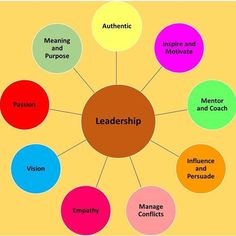Introduction:
Leadership and management are two essential components of any successful organization. Although often used interchangeably, these concepts have some fundamental differences that set them apart. In this article, we will explore the key elements of leadership and management, their distinction, and how they work hand in hand to drive organizational success.
Defining Leadership:
Leadership is a collection of character traits, behaviors, skills, and attitudes that enable an individual to inspire and influence others towards a common goal. Leaders are visionaries who can see beyond the horizon and set the direction for their teams. They ignite passion, instill confidence, motivate their subordinates, and foster a culture of trust.
Key Aspects of Leadership:
1.Vision: Leaders have a clear understanding of where they want to take their organizations in the future.
2.Communication: Effective leaders master the art of communication to convey their message with clarity and conviction.
3.Emotional Intelligence: Exceptional leaders possess strong emotional intelligence skills such as empathy, self-awareness, and adaptability.
4.Decisiveness: Successful leaders make informed decisions swiftly even under pressure or amidst uncertainties.
5.Empowerment: Great leaders empower their team members by instilling autonomy and providing support.
Defining Management:
Management involves organizing, planning, controlling, coordinating resources effectively to achieve an organization’s objectives. Managers are responsible for executing organizational strategies laid out by leaders and ensuring employee alignment with the overall vision.
Key Aspects of Management:
1.Planning: Managers create detailed action plans to achieve organizational goals.
2.Organization: Effective organization entails systematizing tasks into manageable units while coordinating people and resources.
3.Control: Managers monitor performance through metrics for timely intervention when needed.
4.Decision-making: Managers make practical decisions based on evidence and analysis that impacts overall operations.
5.Conflict resolution: Addressing conflicts professionally to enable a productive work environment is crucial for successful management.
The Interplay between Leadership and Management:
Leadership and management are two sides of the same coin but possess distinct approaches and skillsets. When combined effectively, both leaders and managers propel the organization forward by complementing each other’s strengths.
1.Visionary vs. Executioner: Leaders define the vision, while managers execute strategies and plans to bring that vision to life.
2.Change Agent vs. Stabilizer: Leaders initiate and embrace change, whereas managers optimize stability within the existing framework.
3.Motivator vs. Performance Monitor: Leaders focus on inspiring and motivating employees, while managers work on monitoring employee performance and productivity.
4.Risk-taker vs. Risk Mitigator: Due to their nature, leaders take risks associated with innovation, while managers work to maintain a balance and mitigate risks.
Conclusion:
Leadership and management are essential aspects of any organization’s success. Differentiating their roles empowers both leaders and managers to focus on their strengths, ultimately benefiting the entire organization. By fostering a balance between visionary leadership qualities and strategic management skills, organizations can effectively navigate the challenges of today’s complex business world while building a path towards long-term success.




